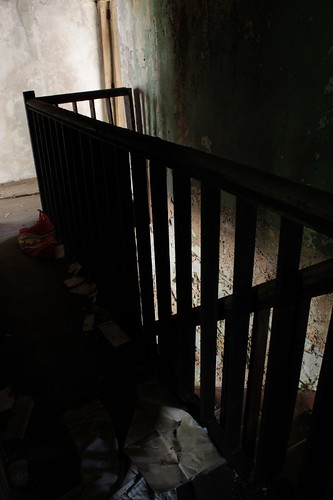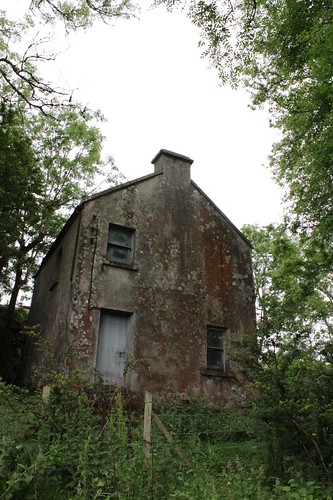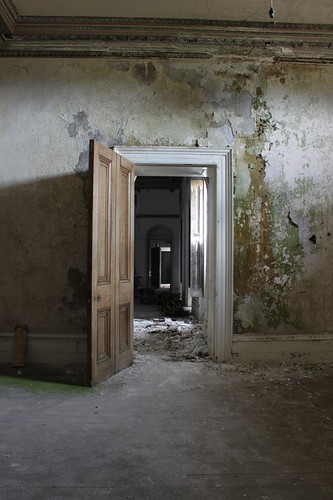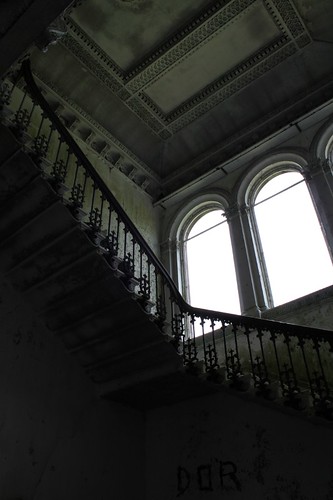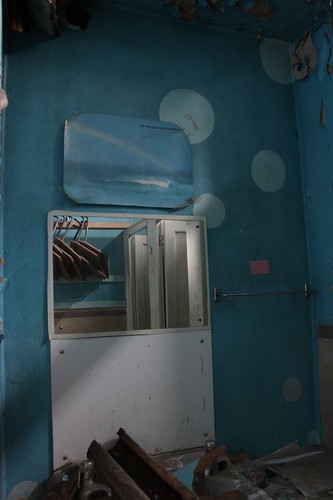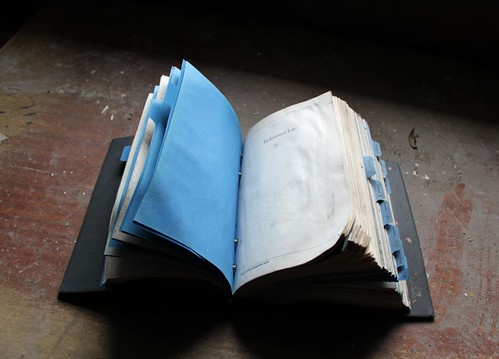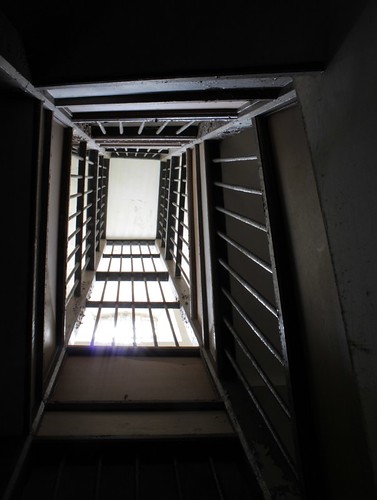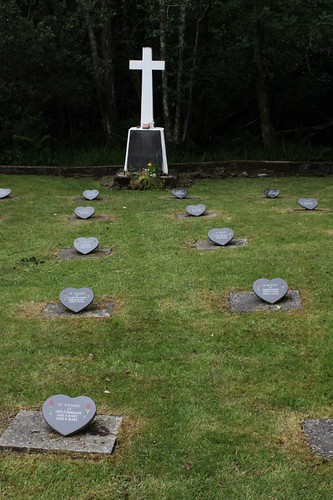I also made a new version of ‘Disciplinary Institutions’, using footage shot in 2009 already used in the 2010 edit, and new, previously unused footage shot in 2010.
[youtube http://www.youtube.com/watch?v=fNw8cFKM_7A&w=425&h=349]
This piece is rather dry, similar to the work of the Wilson sisters, whereas I believe Ghost House is closer to what my work would look like should I move into a more narrative direction. By keeping a steady rhythm and directional continuity in long corridor tracking shots that get darker and darker as the video progress, I aimed to convey the feeling of powerlessness and crushing fate experienced by the inmates.
In this video too, I applied my theoretical readings and paid great attention to steady rhythm, avoiding jerky images and precise pacing by carefully selecting shot lengths. I decided on purpose to leave the 2 last shots on for longer necessary, in order to play with the audience nerves. The previous to last shot is especially unnerving because it’s a steady frame showing a book that says ‘Ecclesiastical law’: nothing happens in it visually yet the words say it all, and the audience have to bear it and suffer it, just like the inmates had to bear their imprisonment. The last shot of the moving shadow of a ‘caged’ plant swaying in the wind is the exact opposite: aesthetically pleasing (though gloomy) but conceptually simple. It is aimed at lulling the audience into calm thinking, so that, maybe, they can start integrating what they might have learnt while watching the video about themselves, their fears, their idea of freedom.
One technical problem to be sorted later is that the words ‘Ecclesiastical law’ are not very clear because the white pages of the book are a little overexposed. This is due to shooting in abandoned buildings with nothing but a small camera and in a completely improvised manner, since neither the local authorities nor the Catholic Church are willing to have the Magdalene Laundries advertised, and access to them therefore has to be ‘taken’. I hope to sort this in post production. I have not done it yet because I’m about to get the Adobe professional software, which should make a more precise job of it than MoviePlus which I currently use.

